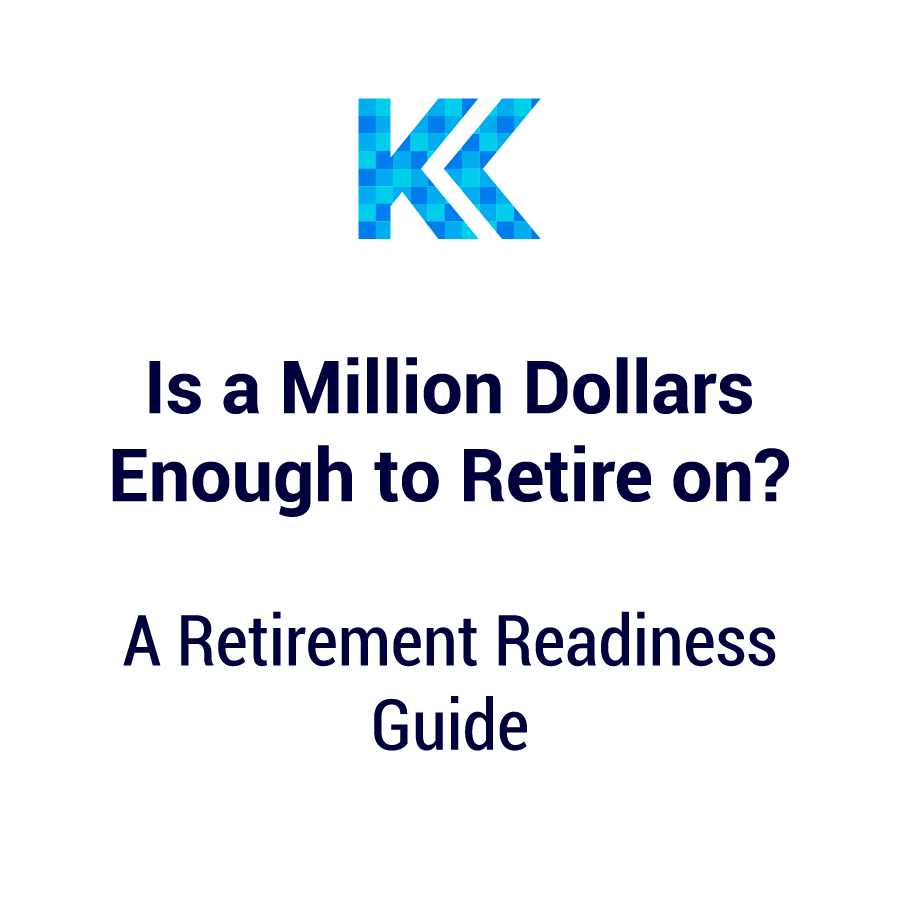You’ve finally crossed that seven-figure mark. After decades of saving, investing, and planning, your account balance now shows $1,000,000. It feels like the number everyone talks about, the point where work becomes optional.
But here’s the real question: Does that mean you can retire?
You’ve likely worked hard for decades, saved and invested carefully, and maybe even paid off your mortgage. Still, uncertainty lingers. What happens if the market dips? What if you live longer than expected? What if taxes or inflation erode your nest egg faster than you planned?
I’ve had these same conversations with my own parents, and many clients just like them. They did a lot right, but still wondered, “Are we sure this lasts?” My job is to help turn that uncertainty into a plan that brings you confidence in retirement.
Here’s how I help people think through the “Can I retire?” question, especially when they’ve crossed that million-dollar mark.
1. A Million Dollars Isn’t the Full Story
We tend to think there’s a magic number out there, that once you hit it, you’re set. But someone with $250,000 might be financially secure, while someone with $3 million could be at risk.
It all comes down to what your retirement costs and how you’ll pay for it.
The real question isn’t “Do I have $1,000,000?”, it’s “Does my income and spending plan work sustainably for the rest of my life?”
2. What’s Coming In (Guaranteed Income)
Start by listing all the income sources you’ll have in retirement:
-
Social Security: When and how you claim can make a major difference. Waiting until 70 can increase benefits, but the best timing depends on your health, income needs, and marital situation.
-
Pensions: If you have one, factor in survivor benefits and cost-of-living adjustments.
-
Rental income, side work, or part-time consulting: Any steady source of income reduces how much you need to draw from savings.
The more of your lifestyle that’s covered by guaranteed income, the less strain you’ll put on your $1,000,000 portfolio, which lowers your risk of running out of money too soon.
3. What’s Going Out (Spending and Lifestyle)
This is where most plans succeed or fail.
Break your retirement expenses into categories:
-
Essentials: Housing, utilities, groceries, insurance, transportation, and other costs.
- Taxes: Retirement doesn’t make taxes disappear. Withdrawals from traditional IRAs/401(k)s, required minimum distributions (RMDs), certain Social Security benefits, and taxable investment income can all create tax bills that must be planned for.
-
Lifestyle: Travel, hobbies, golf, dining, gifts, or helping family.
-
Health Care: Medicare doesn’t cover everything. You’ll likely need a supplement and should plan for rising out-of-pocket costs. It’s important to strategize around IRMAA surcharges as well.
-
Inflation: It’s one of the most underestimated risks. A $10,000/month lifestyle today could cost $12,000/month in 10 years.
Some expenses drop in retirement, but others rise, especially in the first decade when retirees are most active.
4. Filling the Gap (Your Savings and Strategy)
Once you know what’s coming in and going out, the gap between those numbers is what your $1,000,000 needs to cover.
That’s where strategy becomes everything:
-
Withdrawal rate: The old “4% rule” is a starting point, not a rule of thumb. Market conditions, inflation, and taxes all matter.
-
Tax-efficient withdrawals: The order in which you draw from accounts (Traditional IRA, Roth, brokerage, etc.) can significantly extend how long your savings last.
-
Portfolio allocation: Too aggressive and you risk losses at the wrong time. Too conservative and you might not keep up with inflation.
-
Roth conversions and tax planning: Strategic conversions in low-income years can reduce future tax burdens and increase flexibility.
- Asset location: Placing the right types of investments in the right accounts, such as holding tax-inefficient assets in IRAs and growth assets in Roth accounts, can improve after-tax returns and make your retirement income plan more efficient.
It’s not just about having enough money, it’s about designing an income system that can support your lifestyle.
Common Retirement Misconceptions
A few myths come up again and again:
“If I have $1 million, I’m set.”
Maybe, but not always. Longevity, taxes, and spending patterns matter more than the headline number.
“I’ll spend less in retirement.”
You might, but most retirees find the opposite is true in the early years. Travel, home projects, and family support often keep spending steady.
“Social Security won’t be there.”
Social Security isn’t disappearing. It may change over time, but those already near or in retirement will almost certainly receive their full benefits or close to it.
What I Tell My Clients
When I talk with families, including my own, I remind them that retirement success isn’t a number, it’s a plan.
A plan that:
-
Adapts to changing markets and inflation
-
Accounts for taxes, longevity, and healthcare
-
Supports the lifestyle that makes life worth living
Your $1,000,000 is just the starting point. What matters is how you use it: strategically and in alignment with your goals.
Final Thoughts
Retirement is one of the biggest transitions in life, and it’s okay to have questions. You’ve worked hard to build your savings, now it’s about turning that wealth into reliable, lasting income.
If you’re wondering whether your $1,000,000 (or whatever you’ve saved) is enough, let’s find out. With the right plan, you can retire with a custom strategy optimized for your goals. Your dream retirement may be closer than you think.

– Clint Kraft
Founder and Financial Advisor, Kraft Capital

